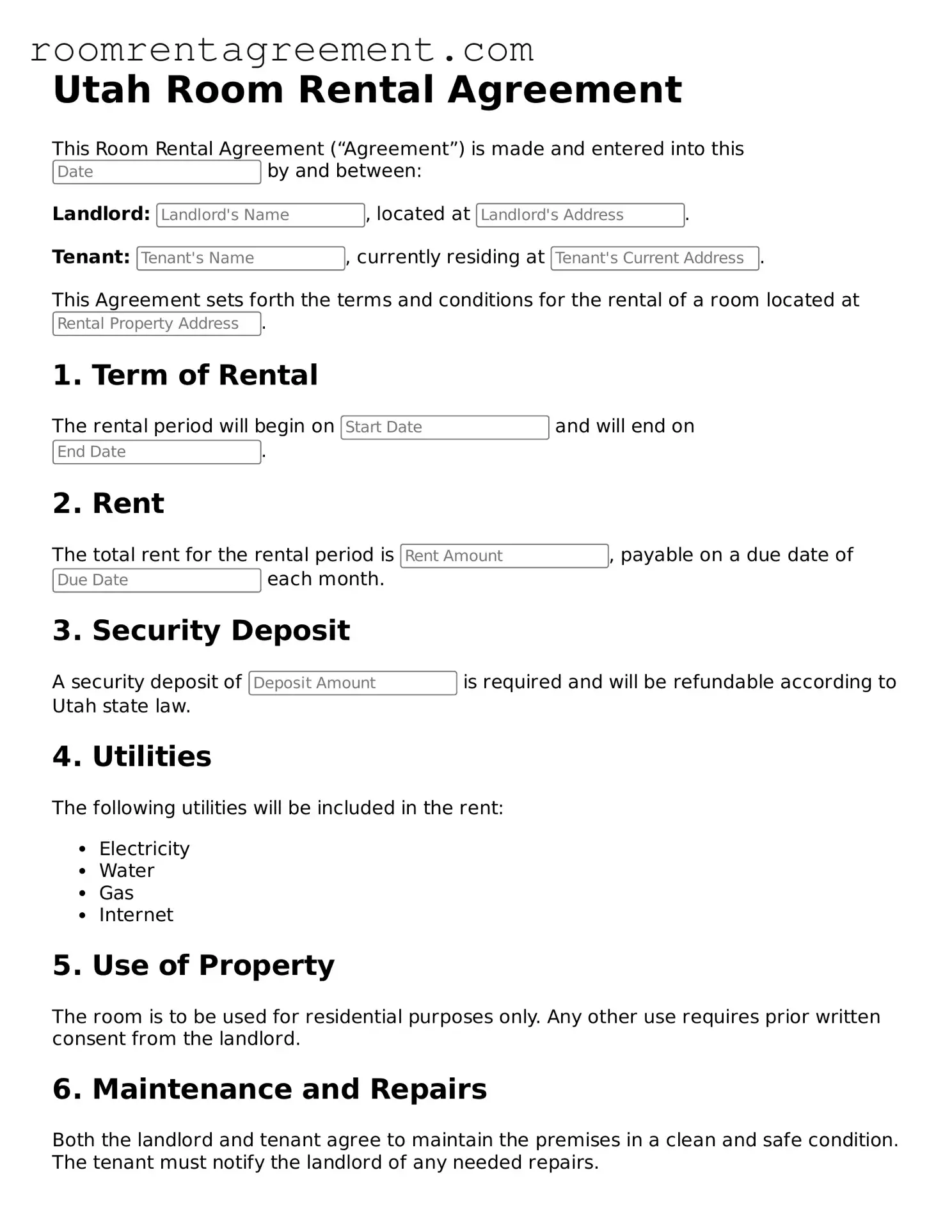More About Utah Room Rental Agreement
-
What is a Room Rental Agreement in Utah?
A Room Rental Agreement is a legal document that outlines the terms and conditions under which a room is rented to a tenant. This agreement protects both the landlord and the tenant by clearly defining responsibilities, payment details, and other important aspects of the rental arrangement.
-
What should be included in a Room Rental Agreement?
Key elements of a Room Rental Agreement typically include:
- Names of the landlord and tenant
- Property address
- Rental amount and payment schedule
- Duration of the rental period
- Security deposit details
- Utilities and services provided
- Rules and regulations for the property
- Termination and eviction policies
-
Is a Room Rental Agreement required in Utah?
While a Room Rental Agreement is not legally required in Utah, it is highly recommended. Having a written agreement helps prevent misunderstandings and provides a legal framework in case disputes arise.
-
How long does a Room Rental Agreement last?
The duration of a Room Rental Agreement can vary. It may be a fixed term, such as six months or a year, or it can be month-to-month. The agreement should specify the length of the rental period.
-
What happens if the tenant wants to leave early?
If a tenant wishes to leave before the end of the rental term, they should review the agreement for any early termination clauses. Often, tenants may be required to provide notice or pay a fee. Open communication with the landlord can lead to a mutually agreeable solution.
-
Can a landlord increase the rent during the rental period?
Generally, a landlord cannot increase the rent until the end of the rental term unless the agreement specifically allows for rent adjustments. For month-to-month agreements, landlords must provide proper notice before implementing a rent increase.
-
What is a security deposit, and how is it handled?
A security deposit is a sum of money collected by the landlord to cover potential damages or unpaid rent. In Utah, landlords can charge a security deposit, but it must be returned within 30 days after the tenant vacates the property, minus any deductions for damages or unpaid rent.
-
Are there specific laws governing Room Rental Agreements in Utah?
Yes, Utah law includes specific regulations regarding rental agreements, tenant rights, and landlord responsibilities. These laws ensure that both parties are treated fairly and have legal recourse if issues arise.
-
What should a tenant do if they have a dispute with the landlord?
If a dispute arises, tenants should first attempt to resolve the issue directly with the landlord. If that fails, they can seek mediation or consult legal counsel for further assistance. Documentation of all communications and agreements is crucial.
-
Can Room Rental Agreements be modified?
Yes, Room Rental Agreements can be modified if both the landlord and tenant agree to the changes. It is advisable to document any modifications in writing and have both parties sign the updated agreement to ensure clarity and legality.
